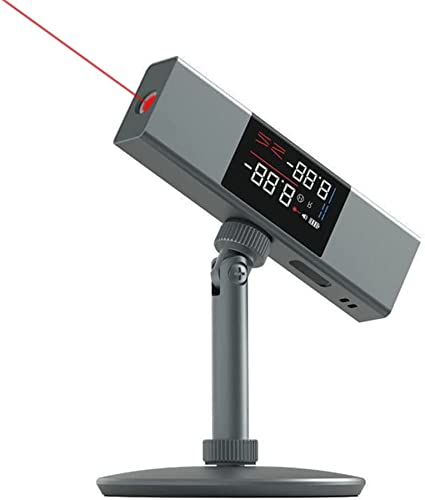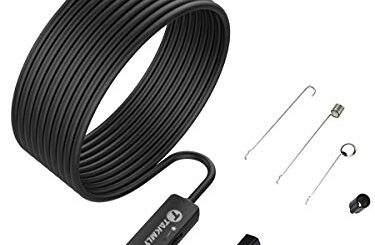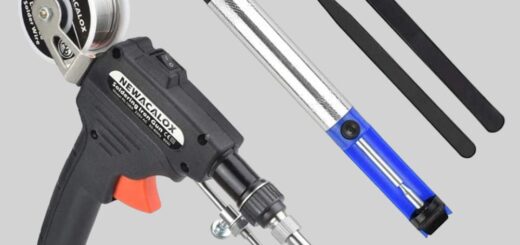Digital Laser Inclinometer

Introduction
Digital Laser Inclinometer: – An Inclinometer is a geotechnical instrument utilized in the estimation of the size of magnitude or inclination, alongside its variety with time in a few structures. For a similar reason, a digital inclinometer utilizes an Android operating system mobile phone having a Bluetooth wireless interface as a readout gadget.
What is a Digital Laser Inclinometer?
A digital laser inclinometer system utilizes a crossing or traversing type digital tilt sensing probe that is connected to a reel unit. The reel unit is comprised of a winding reel that holds the cable and a wireless Bluetooth relay unit that transmits the digital probe data to the readout unit. The cable Reel unit likewise has a rechargeable battery that supplies power to the entire framework.
Applications of Digital Laser Inclinometer
The Digital laser Inclinometers/electronic inclinometer is a robustly constructed instrument designed for clear basic reading, the framework is ideal where a precision angle is required over an enormous reach.
Every one of the four quadrants of the system is precision machined making it conceivable to measure an angle from any side.
The system can work from outright or relative modes through a simple push-button operation.
The battery power, strong design, and conservative development make it ideal for practically any situation, highlights incorporate;
- Absolute/relative measurement
- Selectable measurement mode: radian/angle/mm
- 2 magnetic sides
- Large clear digits with ‘HOLD’ capability
Uses of a Digital Laser Inclinometer
The Digital laser inclinometer framework is utilized for measuring lateral movement in applications like:
- Earth movement in the landslide zone.
- Detecting shear planes in water-powered structures.
- Estimating stability during construction.
- Diversion of diaphragm/retaining walls and piles under load.
The Model EAN-26 digital inclinometer sensor system essentially comprises of:
- Access casing and fittings.
- Tilt sensing probe.
- Interconnecting cable with reel and cable holder.
- Mobile phone data logger.
Advantages of a Digital Laser Inclinometer
Below are some advantages of a Digital laser inclinometer.
- The digital laser inclinometer framework provides critical quantitative information on the magnitude of inclination and its variation with time.
- It gives complete information on the pattern of misshappeing and viability of construction control measures.
- The digital laser inclinometer sensor helps in observing behavior after construction and demonstrates possibly risky circumstances that may adversely affect the steadiness of the structure, its foundation, and encompassing region.
- It additionally provides fundamental data to design improvement to promote more secure and efficient design and construction.
- The EAN-26 digital laser inclinometer framework is an exact instrumentation system.
- Its readout (Android-based mobile device) has inherent information storage spaces and the capability of transferring stored data to a computer.
How does Digital laser Inclinometer Work?
(A) Inclination Measurement
The inclinometer probe utilizes an accelerometer to quantify the tilt angle from the true vertical line or horizontal plane concerning the world’s surface. The accelerometer measures the adjustment of speed increase because of gravity felt by it as it rotates about a horizontal axis.
The accelerometer encounters maximum acceleration increase when its sensitive axis is truly vertical and least acceleration increase when its sensitive axis is truly horizontal.
In a vertical inclinometer probe, the internal accelerometer is mounted with the end goal that when the inclinometer probe is genuinely vertical, the accelerometer sensitive axis is aligned vertically.
In an horizontal inclinometer probe, the accelerometer sensitive axis is mounted upward when the probe is aligned along a genuine horizontal plane. As the accelerometer rotates about a horizontal axis along a vertical plane, its result changes relatively to the sine of the angle its sensitive axis makes from the true vertical.
A uni-axial vertical inclinometer test can measure the tilt along a vertical plane passing through the probe axis. A bi-axial inclinometer test can quantify the tilt freely along two vertical planes that are symmetrical to one another, with their intersection line incidental to the inclinometer probe axis.
A horizontal inclinometer probe is by and large used to quantify tilt along a vertical plane passing along the axis of the inclinometer. A subsequent accelerometer is frequently given to measure the tilt along a plane perpendicular to the horizontal inclinometer probe axis so any rotation of the horizontal probe during a traverse can be distinguished and rectification for this applied.
(B) Digital Inclinometer Cable and Reel
The EAN-26 Readout unit is intended for use with the EAN-26Rcable reel. The reel interfaces with digital output uni-axial or bi-axial digital inclinometer probes over a long cable. The EAN-26R cable reel has a Bluetooth interface unit inside the reel and a long cable to connect with a high-precision digital inclinometer probe.
It is powered by a 7.2 V compact-size rechargeable battery. The power ON/OFF push button is provided on the reel’s disk close to the battery holder. The cable reel utilizes two core cables to interface with the digital inclinometer probe.
The length of the cable shifts relying upon the ordered option. Ferrules are creased on cable at the defined intervals to suspend the probe in a borehole. cable reels are supplied with an ordered length of cable set apart at consistent distances with ferrules in one or the other measurement or imperial units of measurement.
Cable in meters is having a golden ferrule crimp at 0.5 meters span while red ferrules are creased at 1.0 meters stretch. White ferrules are crimped at every 5.0 meters interval and are set apart with the depth value.
Conclusion
Geotechnical monitoring and instrumentation is an immense field that incorporates risk management, underlying health monitoring, hazard prevention, and early-cautioning frameworks utilizing Geo-technical sensors. One such Geo-specialized instrument is the inclinometer. The inclinometer casing can be installed vertically in boreholes, contiguous to the wall face, or can be embedded within underlying components. Traversing-type inclinometer probes are typically used to determine the general shape of the retaining structure and changes in it over a while. Inclinometers can be utilized to monitor stress relief ground movements and conceivable removal of rock blocks during the construction of tunnels and shafts. Gradient meters are utilized to verify the adequacy of ground supports, identify potential flaws in the construction approach, and serve as a warning system for potential ground disappointment or failure.






























































